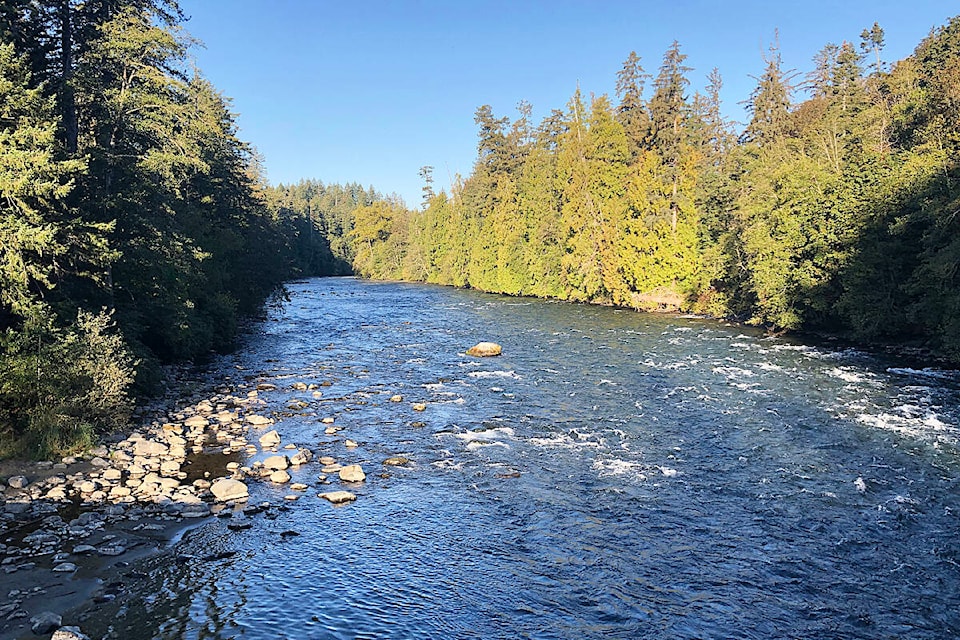BC Hydro has begun managing the annual September to November fish migration and spawning flows down Elk Falls Canyon and, as a result, is increasing flows on the Campbell River.
The goal of these higher flows, in place two days a week over a nine-week period, is to benefit salmon spawning within good habitat in the lower canyon up to Elk Falls, BC Hydro spokesperson Stephen Watson said. Elk Falls is a natural barrier to fish passage. The migration flows will take place each Tuesday evening to Thursday evening. The first migration and spawning flow took place on Sept. 13 and 15, and will be complete on Nov. 10.
The water flow in the canyon will increase from about four cubic metres per second (m3/s) to about 7 m3/s during these two-day migration flows. BC Hydro is issuing a public safety notice to stay away from the upstream side of Elk Falls. Temporary safety signage will be in place.
Meanwhile, BC Hydro provided a status update of the upstream reservoir water levels.
“As we head into the fall period and storm season, we like to have a lower reservoir level in anticipation of those storm events for flexibility in flood risk management operations,” Watson said. We are also looking to increase flows for spawning salmon in the Campbell River. Beginning the evening of Sept. 22, we will increase the total Campbell River flow from about 40 m3/s to about 80 m3/s. Around the end of September or early October we plan to increase the flow to about 100 m3/s.
“The October and November target flow for fish spawning, mainly for Chinook, is 100 m3/s. Recreational anglers in the river should be aware and be cautious of the upcoming increases in flow rates starting on Sept. 22.”
The Upper Campbell Reservoir/Buttle Lake is currently at 217.9 metres. It hit a high a 219.4 metres this summer and was well within the 217 m to 220.5 m summer recreation target. After a series of dry spring seasons this year was the best we’ve seen for summer reservoir levels since 2017. The reservoir level will decline as we prepare for the fall storm season and provide flows downstream for salmon spawning.
The Lower Campbell Reservoir/McIvor Lake is currently at 177.4 metres and also had good summer recreation levels. The Upper Campbell Reservoir/Buttle Lake is at 217.35 m.
The John Hart Reservoir, given how small the storage is, is generally held at a high level with little fluctuation.
RELATED: Site preparation works begin at John Hart Dam
Elk Falls water flow will increase 12-fold as BC Hydro diverts water from underground tunnels
